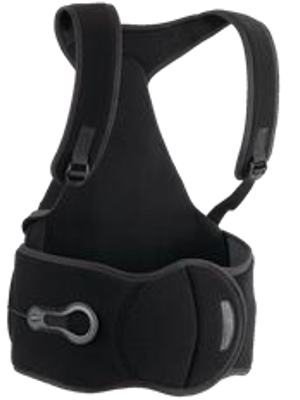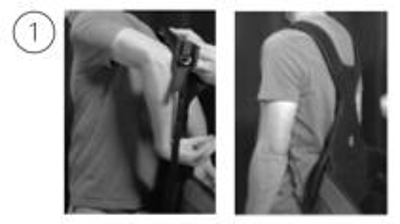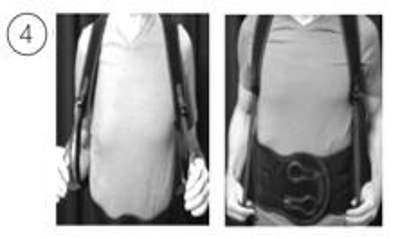Cork Emergency Departments
Introduction
This brace has been prescribed by your clinician to you due to a broken bone (vertebrae) in your back. This brace aims to support your back, giving your bone time to heal. The same way a cast would work after breaking an ankle or wrist.
This leaflet will provide information on how to manage your brace at home, however you should follow all instructions given by your clinicain and his/her team even if different to information provided in this leaflet.
Guidance
Your brace will have been sized and fitted for you by a physiotherapist. You will have been shown how to put the brace on and off prior to discharge from hospital.
The brace is normally worn for between 6 and 12 weeks. When you see the orthopaedic team as an outpatient in fracture clinic, and they are happy with the healing of the bone, they will refer you to physiotherapy to begin weaning from the brace.
This is a gradual process which will take place over a few weeks.

Complications
If you experience any one or more of the following signs and symptoms, seek medical attention immediately:
- Sudden loss of feeling in your legs
- Sudden loss of strength in your legs
- Altered sensation around your private area
- Loss of control of bladder or bowel – unable to go or unable to stop yourself from going to the toilet
- Sudden changes in your walking pattern or difficulty controlling your walking pattern
- Pins and needles/numbness in your limbs
Putting on your brace




Removing your brace
- Undo the ''Pull Tabs'' from the front of the brace
- Open the belt around your waist
- Remove the shoulder straps as if taking off a backpack
Skin Care Advice
You should wear a tight-fitting vest or t-shirt underneath your brace.
The brace should not rub against your skin.
Check your skin regularly for any signs of irritation i.e. redness, itching and soreness.
You may remove your brace for washing and sleeping.
DO:
- Wear the brace throughout the day. It may be removed at night for sleeping
- Remain active by taking short walks, little and often, appropriate to your fitness level
- Sit in an upright position or in a higher chair, making it easier to rise from
- Expect some discomfort as the brace is designed to limit your movement
DO NOT:
- Lift any heavy objects
- Bend forward too much
- Attempt to adjust the sizing of your brace at the back
- Stop wearing the brace until instructed by your consultant
- Remain in bed while wearing the brace as you will lose strength and fitness
- Stay in prolonged positions such as sitting
- Take part in contact sports or dangerous activities
- Smoke as this will delay healing time
Contact Details
If you have any concerns or if you experience any problems with your brace please contact:
- CUH Physiotherapy Department on (021)4922400
If you are concerned, please contact the Emergency Department you first attended:
MUH (021)4271971
Mercy Injury Unit, Gurranabraher (021)4926900
CUH (021)4920200
LIU Mallow(022)58506
LIU Bantry(027)52900